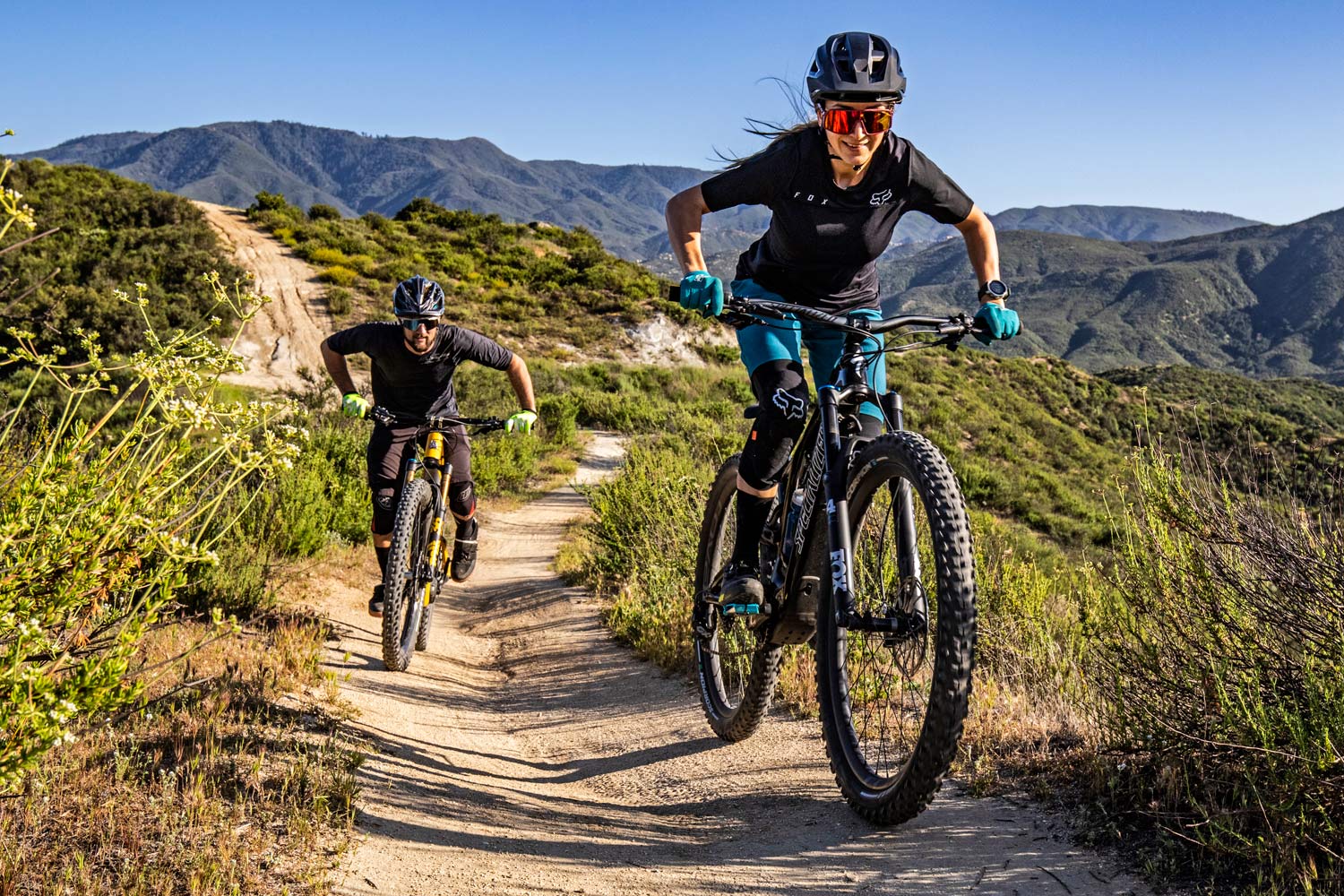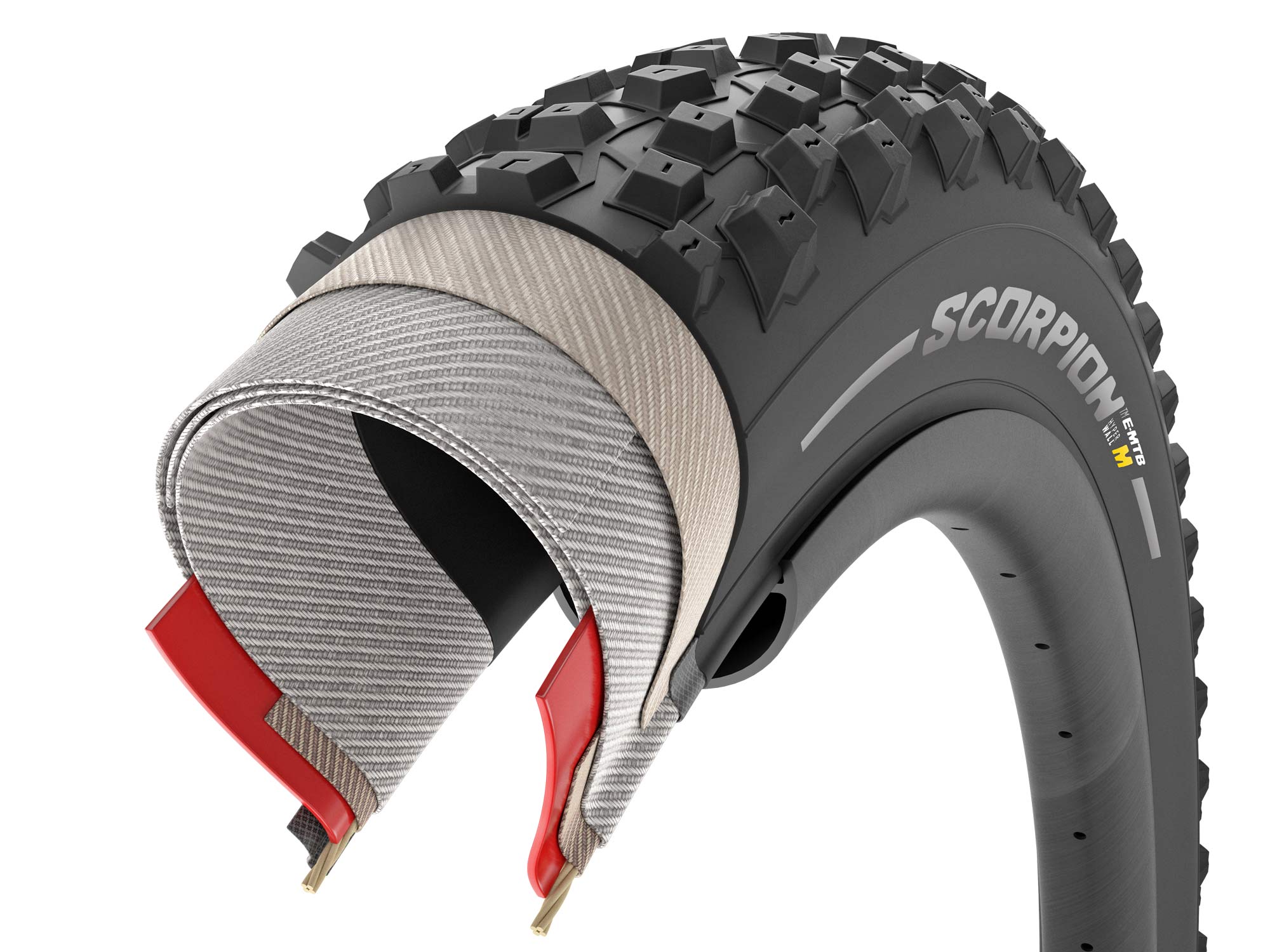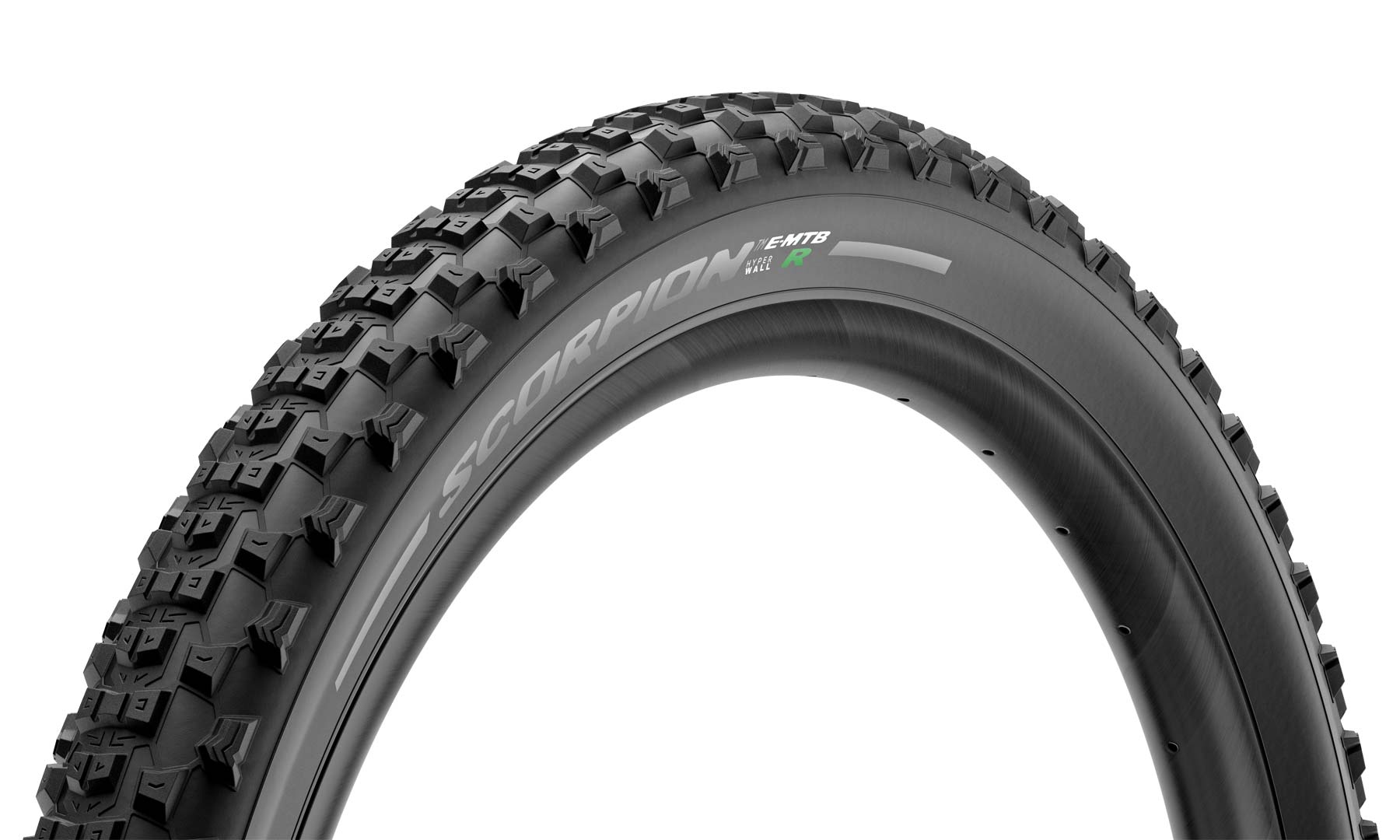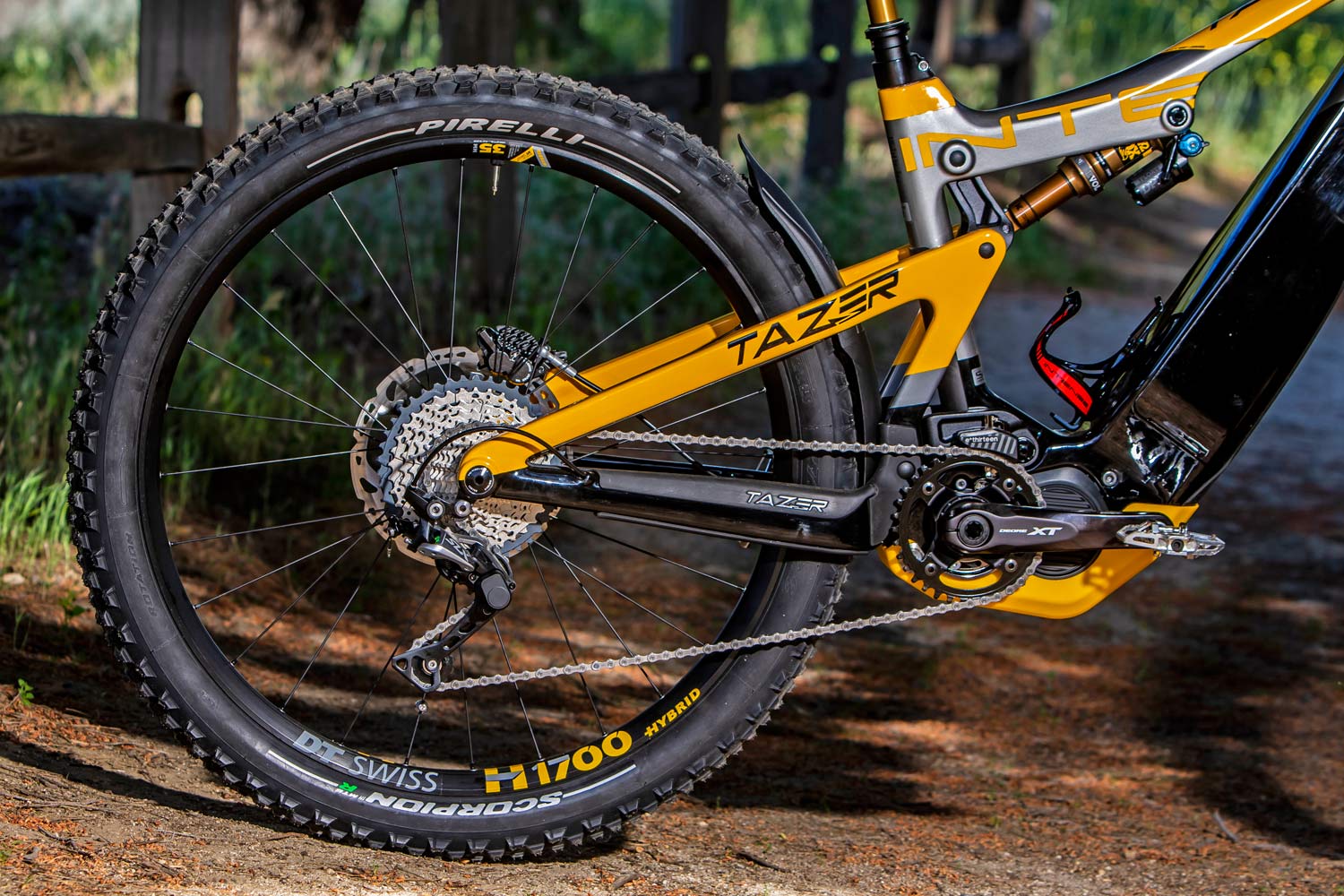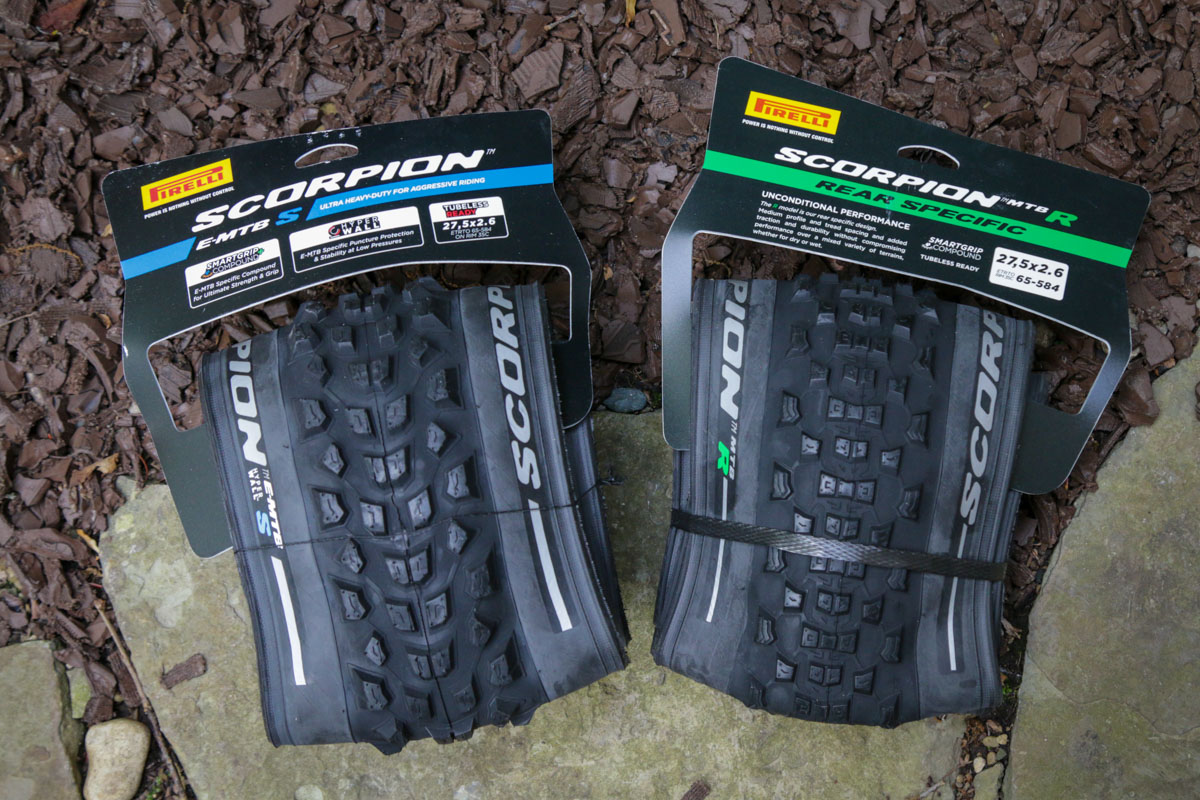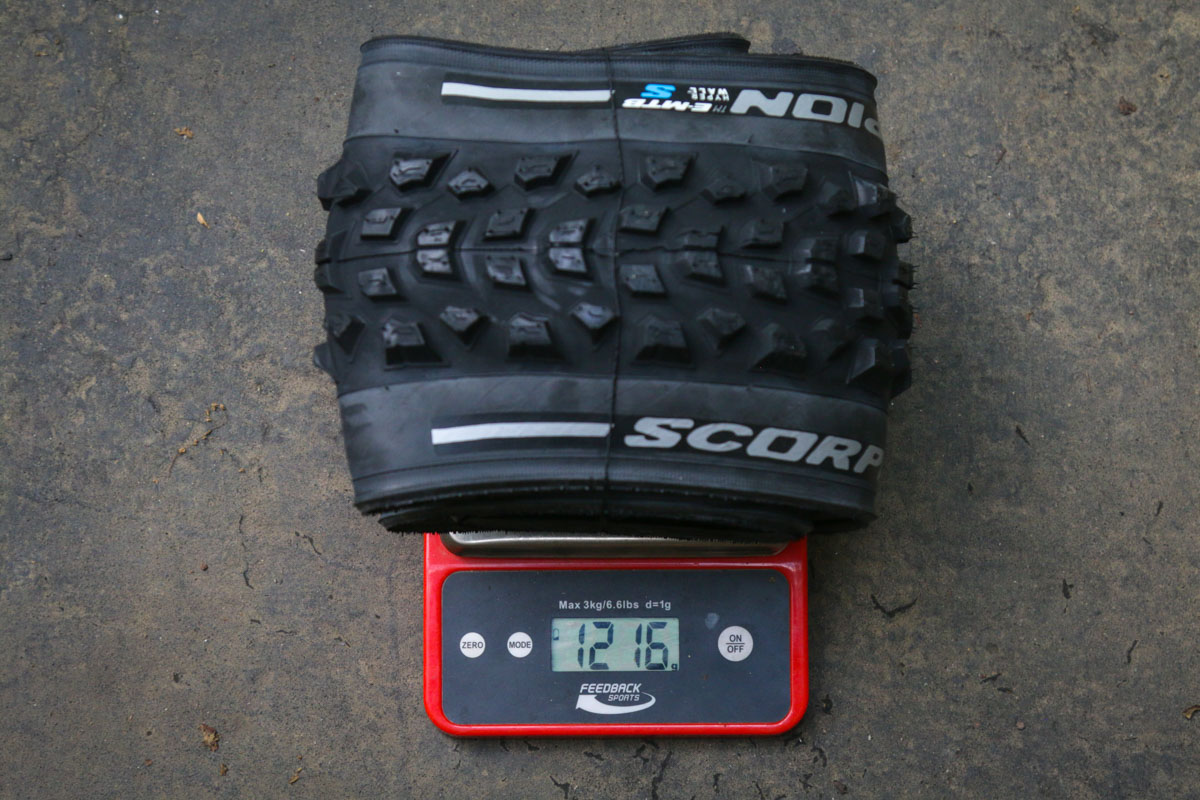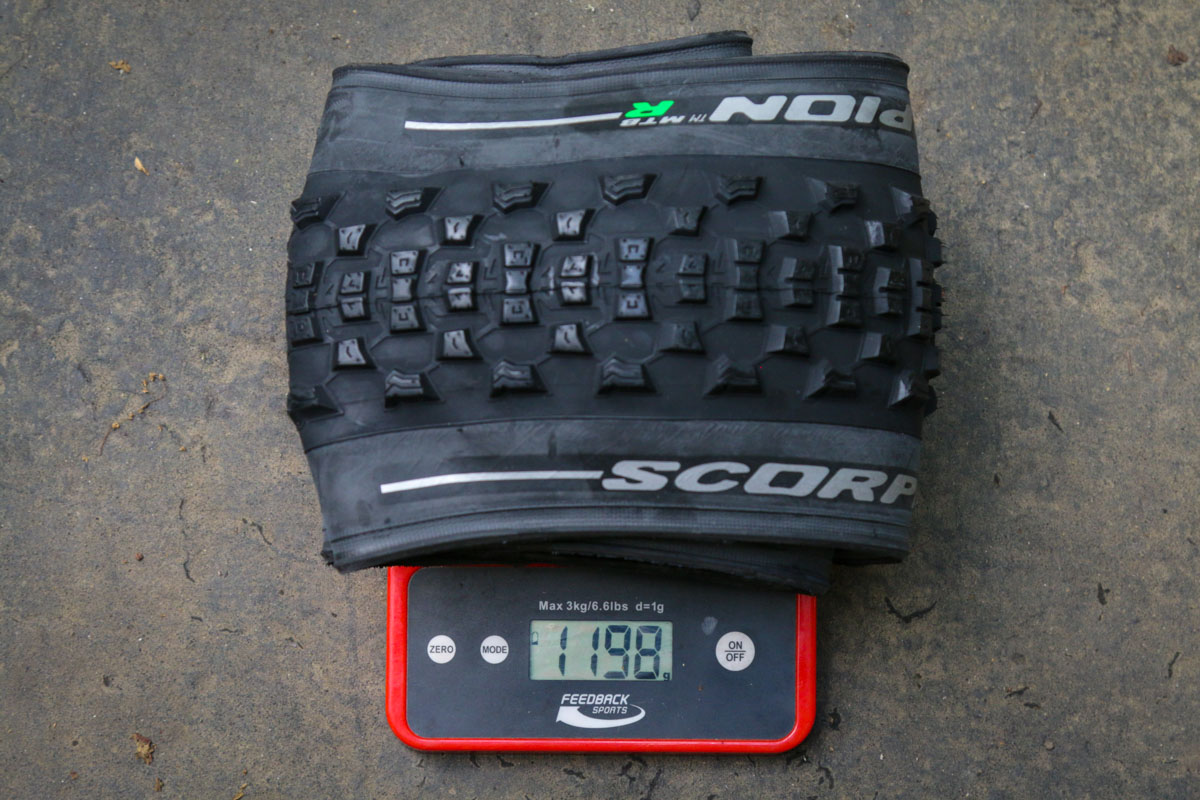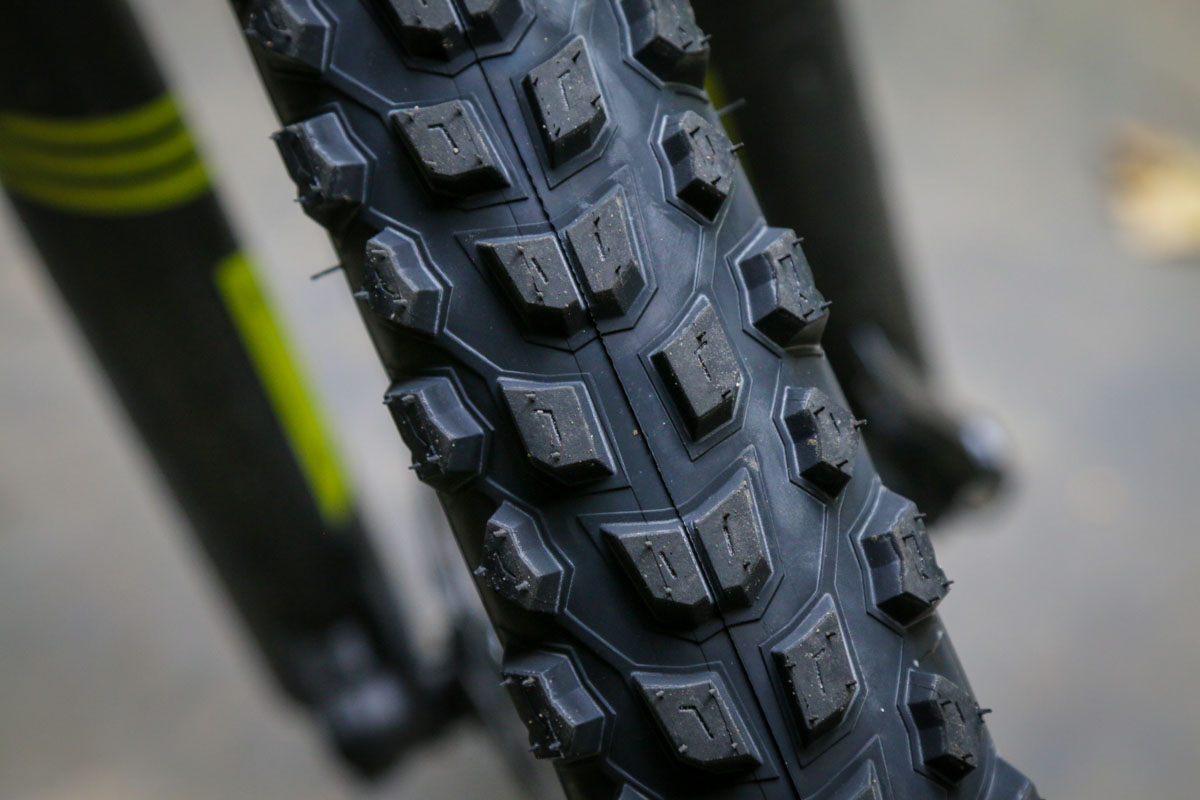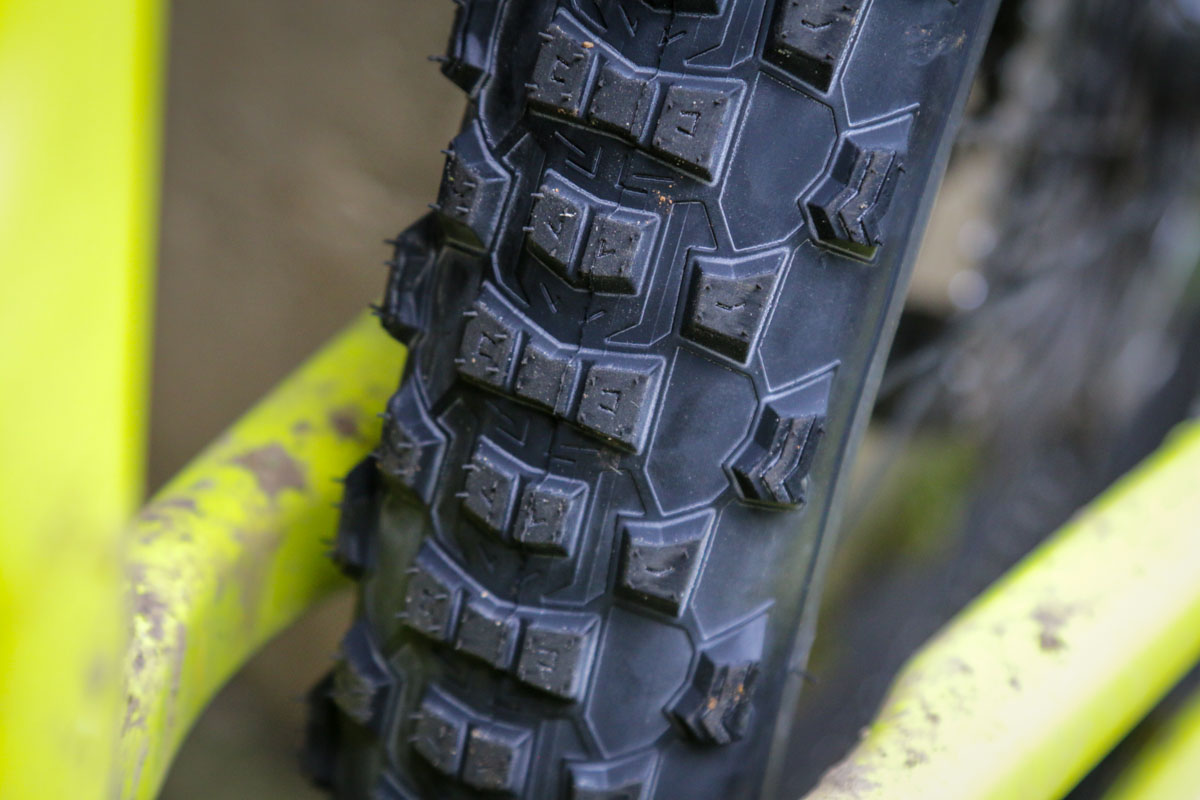Pirelli Scorpion E-MTB takes the same enduro mountain bike tires that we detailed last month, given them a bit more protection & a natural rubber additive to create a range of lightweight, high-performance e-bike tires for trail riding. Sticking to what they know works, Scorpion E-MTB shares the same condition-specific S, M & R treads in even wider 29″ & 27.5″ sizes. Whether you are looking for shred-ready e-bike tires, or just massive enduro (or DH?) tires that will stand up to abuse, the Scorpion E-MTB may be what you’re after…
2020 Pirelli Scorpion E-MTB trail & gravity-ready e-bike tires
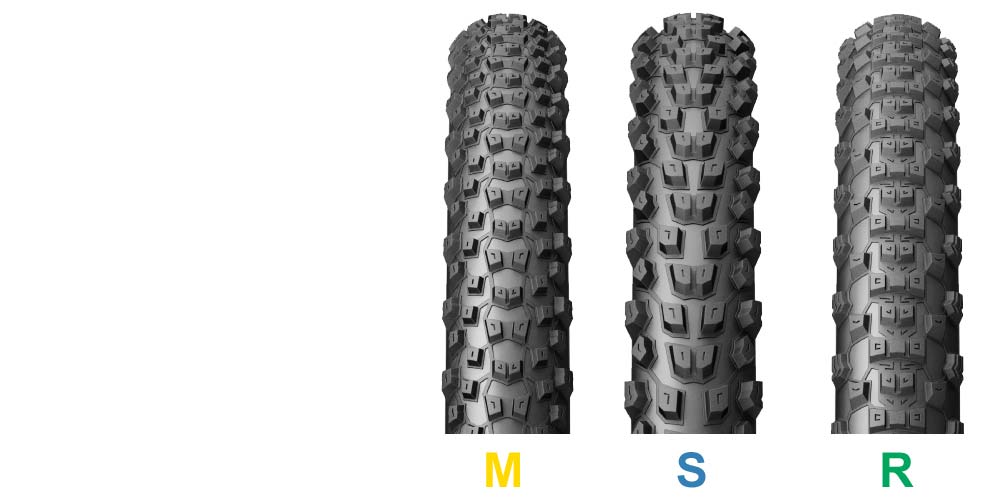
Since the three trail conditions-specific treads are the same as Pirelli’s XC, Trail & Enduro tires that we just detailed recently – S (Soft Terrain), M (Mixed Terrain) & R (Rear Specific) – we can focus on what makes these tubeless-ready tires e-bike specific.
First is HyperWall sidewall protection. Just like in the enduro tires, HyperWall is a multiple-ply 60tpi nylon sidewall construction, reinforced with a bead-to-bead textile puncture protections layer and an anti-pinch-flat rubber protection insert that looks to extend a bit higher here, essentially top the midway line of the sidewall.
With generally lightweight resulting construction, these might just make for good gravity tires too, especially for riders who tend to shred through rubber.
The rubber compound is different, too. Most other Pirelli Scorpion mountain bike tires use the same SmartGrip single compound rubber. But the new E-MTB family gets a new SmartGrip+ for e-bike durability, while maintaining grip in wet or dry conditions. The secret to the new rubber is a naturally-sourced Lignin additive, created as a waste product in paper pulping processing. (It’s actually the component that makes newspaper yellow, but improves this rubber’s performance.) Pirellis says it especially improves performance of the tires’ reaction to high-torque, high-speed eMTB power inputs.
At $80 / 70€ per tire, the E-MTB tires come in two diameters & one width:
- Scorpion E-MTB M 29×2.6″ HyperWall (1270g)
- Scorpion E-MTB M 27.5×2.6″ HyperWall (1200g)
- Scorpion E-MTB S 29×2.6″ HyperWall (1330g)
- Scorpion E-MTB S 27.5×2.6″ HyperWall (1260g)
- Scorpion E-MTB R 29×2.6″ HyperWall (1270g)
- Scorpion E-MTB R 27.5×2.6″ HyperWall (1200g)
2020 Pirelli E-MTB e-bike tire availability
Most of Pirelli’s revamped 2020 mountain bike tire range is already available, with a few holdouts expected in the next couple of weeks. These new E-MTB tires though are expected to be rolling out to bike shops & Pirelli retailers worldwide, starting this week.
Actual Weights & First Impressions
Pirelli sent over a set of the new tires since we just happened to have a Santa Cruz Heckler in for a review (more on that soon). To match the Heckler, we ended up with a 27.5 x 2.6″ S for the front, and R for the rear.
Impressively, both tires measured less than claimed with the S coming in at 1216g (1260g claimed), and the R at 1198g (1200g claimed).
Also impressive is that both tires measured true to size on the Santa Cruz Reserve DH rims (31mm internal width). They were right on the money when installed, and haven’t stretched much over a week, measuring 2.6275″ wide.
On first impression, the tires seem to have a fairly stiff sidewall – especially compared to the standard Maxxis EXO+ Minion DHR IIs that came on the Heckler. Installation was fairly easy, with both tires slipping onto the rims without tools and easily seating up tubeless. The stiffer casing also seems to allow for lower tire pressures with plenty of support – I’ve been running them from 13-16psi, and could probably go lower.
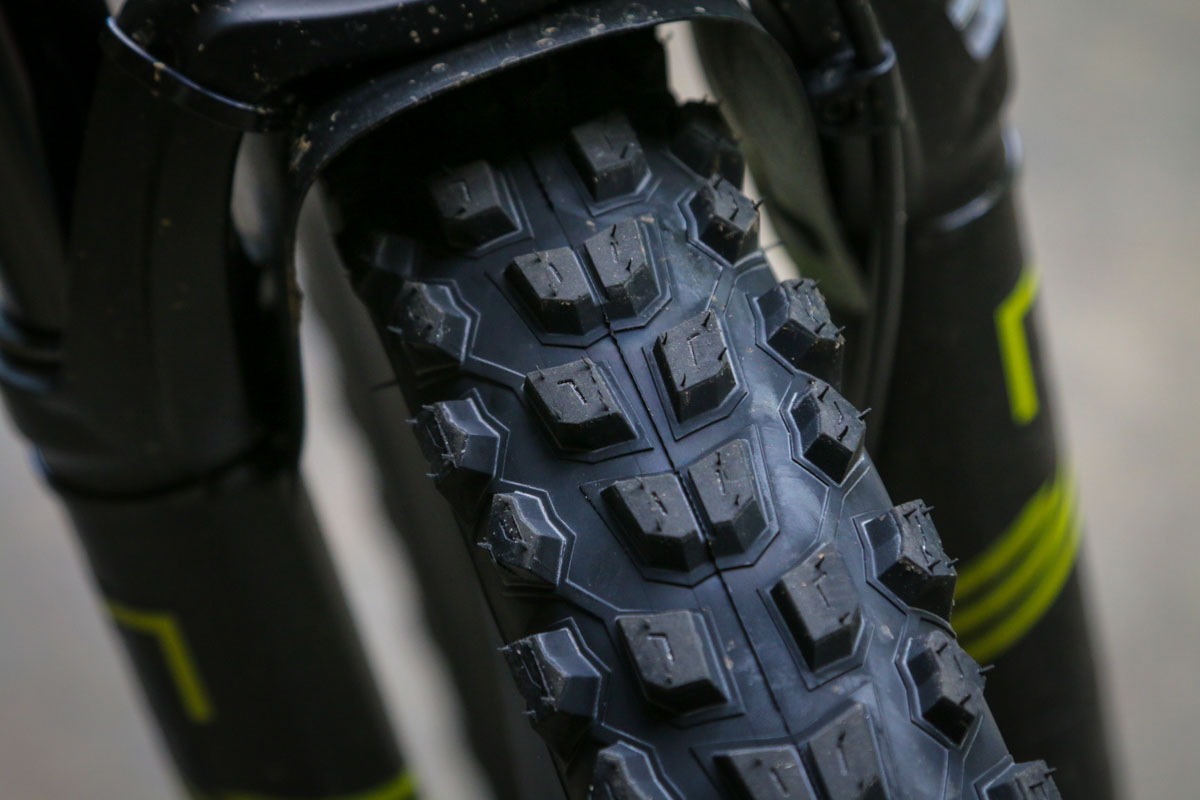 One thing I’ve noticed in riding the Heckler with the Minion DHR II on the front, is that the bike has a tendency to want to push the front end when you’re cornering under power. Comparatively, the tread blocks on the Pirelli S are quite large and soft which seems to be able to better reign in the front of the bike. The flip side is that the Pirelli R doesn’t seem to have quite the lateral grip as the DHR II, so the rear of the bike tends to slide around a bit more. However, the e-bike encourages riding to the trailhead rather than driving, so having a tire that is potentially more durable in the back seems like it could be a benefit in the long run.
One thing I’ve noticed in riding the Heckler with the Minion DHR II on the front, is that the bike has a tendency to want to push the front end when you’re cornering under power. Comparatively, the tread blocks on the Pirelli S are quite large and soft which seems to be able to better reign in the front of the bike. The flip side is that the Pirelli R doesn’t seem to have quite the lateral grip as the DHR II, so the rear of the bike tends to slide around a bit more. However, the e-bike encourages riding to the trailhead rather than driving, so having a tire that is potentially more durable in the back seems like it could be a benefit in the long run.
